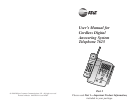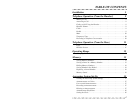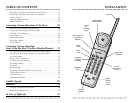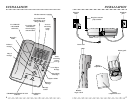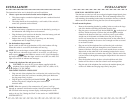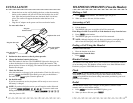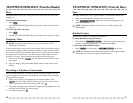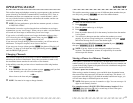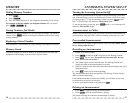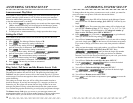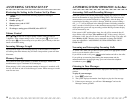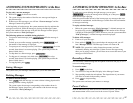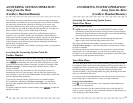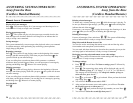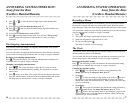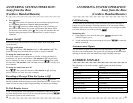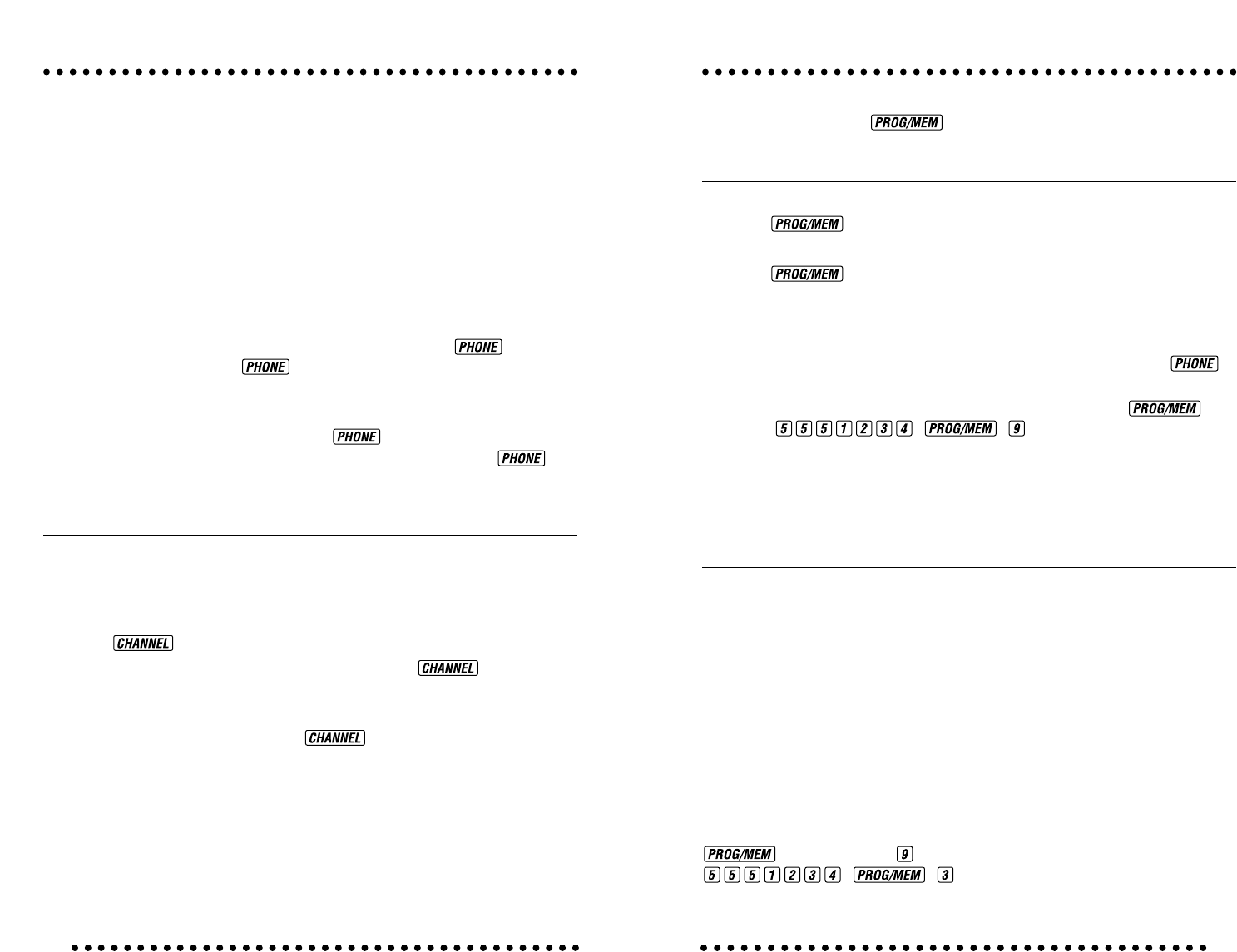
MEMORYOPERATING RANGE
This cordless answering system can store 10 different phone numbers that you
can dial just by pressing and one of the number buttons.
Storing Memory Numbers
1 Make sure the handset is OFF.
2 Press .
3 Enter the phone number (up to 16 digits).
4 Press .
5 Press any number button (0-9) for the memory location where the number
is to be stored.
6 You will hear a three-part tone that confirms the number was stored
properly. If you hear a long buzzing tone, or nothing at all, press ,
then follow the steps above to store the number again.
For example, to store 555-1234 in memory location 9: press ,
then press , , .
*
NOTE: You may choose to store emergency numbers in memory
locations. The manufacturer assumes no responsibility for customer
reliance upon this feature.
Storing a Pause in a Memory Number
If this phone is connected to a switchboard, you might have to dial an access
number (usually 9) to get an outside line. You can store the access number and
a pause in the dialing sequence; the pause allows the switchboard enough time
to get an outside line dial tone.
To insert a pause in a stored number:
When storing a number in memory, press and hold down the number button
that comes before the pause until you hear the second beep. This inserts a 1.5
second pause after that digit. If you hold the number button down longer, you
will hear more beeps as additional pauses are stored.
*
NOTE: Each pause you store is counted as a digit. You can store up to 16
digits in each memory location.
For example, to store 9, PAUSE, 555-1234 in memory location 3: Press
, then hold down until a second beep is heard. Then press
, , .
This cordless integrated telephone answering system operates at the maximum
power allowed by the Federal Communications Commission (FCC). Even so,
the handset and base can communicate over only a certain distance—which
can vary with the locations of the base and handset, the weather, and the con-
struction of your home or office.
*
NOTE: For best performance, point the base antenna upwards, as shown
in “INSTALLATION.”
If the handset is moved to a point where the base and handset can no longer
communicate, you are “out of range.” When you try to make a call, the handset
will sound two short beeps to indicate that you are out of range.
If you receive a call while you are out of range, the handset might not ring—
or, if it does ring, the call might not connect when you press . Move
closer to the base, then press to answer the call.
If you move out of range during a phone conversation, you will hear noise or
interference. To improve reception, move closer to the base.
If you move out of range without pressing , the phone will be left “off
the hook.” To hang up, walk back into range, periodically pressing
until the PHONE light goes off.
Changing Channels
This cordless telephone has an advanced 25-channel AutoSelect feature that
minimizes the chance of interference. Every time you answer or make a call,
the AutoSelect feature searches for and selects a clear channel.
In the unlikely event that you hear noise or interference while using handset:
1 Press .
2 If the interference does not clear, continue to press until you find
a clear channel (your call will not be interrupted).
—OR—
Move closer to the base and press .
*
NOTE: You must be in range to change channels.
12 13



